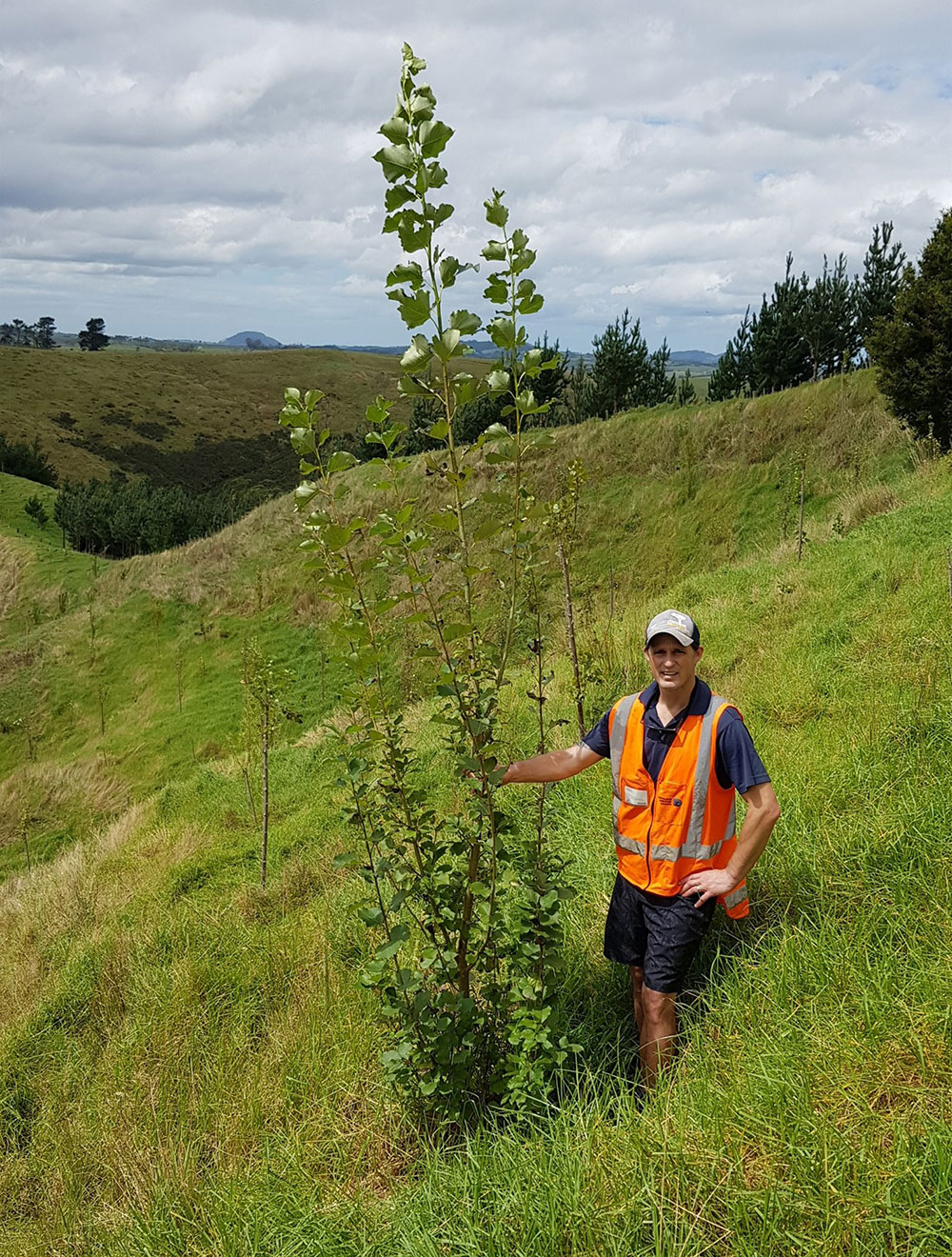Story
Nursery diversification triggers record growth
NRC nursery trials of younger trees and different poplar and willow cultivars for erosion control are yielding impressive results, showing good survival rates for shorter and younger trees that are more cost-effective to produce.
Diversifying into younger, cheaper planting options for erosion control has yielded record growth for Northland Regional Council’s nursery, with unprecedented orders exceeding its annual target by 28,700.
The nursery grows and supplies poplars and willows for planting on erosion-prone land. These types of trees are well suited to preventing and controlling erosion due to their deep, extensive root networks.
The nursery typically receives orders for about 5,000 3-metre willow or poplar poles per year, with a limited selection of cultivars, but in 2022-23 the team decided to diversify.
Nursery Manager John Ballinger says they added shorter and younger plants to the mix with 1-metre wands, 1.5 to 2-metre stakes, and rooted cuttings.
“This was to use all available planting material and test whether there was a difference in survival rates between the poles and the younger plants.”
They also established field trials to test new poplar cultivars, and audited the survival of nursery poplars supplied to farms throughout the region.

Two-year-old rooted cuttings growing well at the Titoki trial site.
“As environmental conditions change and new hybrid clones are developed, we saw an opportunity to diversify the cultivars we grow in our nursery,” John said.
The audit results showed wands and rooted cuttings had superior survival rates at 90% and 92% respectively, compared to 3-metre poles at 69%.
“Wands and rooted cuttings are cheaper to produce than poles. Good survival rates so far suggest they’re a good option for areas that can be easily fenced, because they need to be protected from stock while the trees establish,” said John.
The younger trees proved popular, with unprecedented demand for 30,900 wands, 2,600 stakes, and 2,200 poles – 510% over the nursery’s annual target of supplying 7,000 trees.
The nursery is continuing trials to test cultivars under different climatic conditions as Northland moves from a wet La Nina phase to El Nino, which often produces dry weather.
